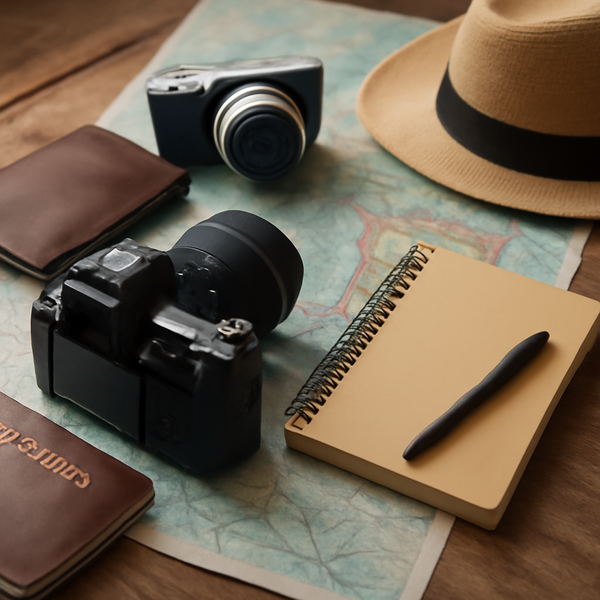
Elevate your travel memories with captivating photography. This guide unlocks the secrets to taking breathtaking travel photos, whether you're exploring exotic locales or your own backyard. Discover how to compose shots like a pro, harness natural light, and capture the true essence of your journey. From iconic landmarks to candid moments, learn the techniques that will make your travel album truly unforgettable.
Understanding Your Camera and Light
Before venturing out, familiarize yourself with your camera's settings. Aperture controls depth of field, crucial for isolating subjects or capturing expansive landscapes. Shutter speed dictates motion blur, perfect for silky-smooth waterfalls or freezing fast-paced action. ISO impacts light sensitivity; a lower ISO yields cleaner images, while higher ISOs are necessary in low-light conditions but can introduce noise. Natural light is your greatest asset. The 'golden hours' – shortly after sunrise and before sunset – offer soft, warm light that beautifully illuminates subjects and creates dramatic shadows. Midday sun can be harsh, causing blown-out highlights and strong, unflattering shadows. If shooting midday, seek shaded areas or use a diffuser to soften the light. Experiment with shooting from different angles – get low to the ground for a unique perspective or climb to a higher vantage point to showcase the scale of your surroundings. Pay attention to the direction of light; side lighting can add texture and dimension, while backlighting can create ethereal silhouettes.
Composition Techniques for Impactful Shots
Composition is the art of arranging elements within your frame to create a visually appealing and engaging photograph. The rule of thirds is a fundamental principle: imagine your frame divided into nine equal segments by two horizontal and two vertical lines. Placing your subject or key elements along these lines or at their intersections often creates a more balanced and interesting composition than centering the subject. Leading lines are powerful tools; use natural lines like roads, rivers, or fences to guide the viewer's eye through the image and towards your focal point. Symmetry and patterns can also create striking images, especially when capturing architectural details or natural formations. Don't be afraid to break the rules once you understand them; sometimes, a perfectly centered shot can be very effective. Negative space – the area around your subject – can also be used strategically to draw attention to your main subject and create a sense of scale or isolation. Experiment with different focal lengths; a wider lens can capture the grandeur of a landscape, while a telephoto lens can compress distances and isolate details.
Storytelling Through Your Travel Photos
Beyond simply documenting a place, great travel photography tells a story. Capture the everyday life and culture of your destination. Look for candid moments – people interacting, local markets bustling with activity, or artisans at work. These images add depth and authenticity to your travel narrative. Focus on details that reveal the character of a place: intricate architectural patterns, vibrant textiles, or the texture of local food. Consider creating a series of images that follow a theme or tell a sequential story, like the journey from a local village to a panoramic viewpoint. Include yourself in some shots, not just as a subject, but as part of the scene, to convey a sense of presence and personal experience. Think about the emotions you want to evoke: joy, wonder, serenity. These can be conveyed through lighting, color, and the expressions of people you photograph. Back in your editing process, select images that complement each other and arrange them in a way that creates a compelling narrative flow.
Essential Gear and Post-Processing Tips
While a high-end camera isn't strictly necessary, understanding your equipment is. A versatile zoom lens can be a travel photographer's best friend, allowing you to adapt to various situations without constantly changing lenses. Consider a lightweight tripod for sharp low-light shots and long exposures. For post-processing, software like Adobe Lightroom or Snapseed offers powerful tools to enhance your images. Basic adjustments like exposure, contrast, and white balance can significantly improve a photo. Don't over-edit; the goal is to enhance, not to create an artificial look. Cropping can refine your composition and remove distracting elements. Sharpening should be applied subtly to bring out detail. Experiment with saturation and vibrance to bring out the colors of your destination, but be mindful of creating an unnatural appearance. Learning basic editing techniques will allow you to fine-tune your vision and bring out the best in every shot you take on your travels.
Capturing Authentic Moments and Avoiding Tourist Traps
One of the keys to compelling travel photography is capturing authentic moments, moving beyond the typical tourist snapshots. Instead of just photographing the iconic landmark from the designated viewpoint, try to find a different angle or a quieter spot to observe the scene. Look for local life unfolding – people going about their daily routines, street vendors, or children playing. These unscripted moments often reveal the true spirit of a place. Engage with locals (respectfully, of course) and ask permission before photographing them. Sometimes, the most memorable photos come from unexpected encounters. When photographing landscapes, consider the time of day and weather. Overcast days can provide soft, diffused light perfect for moody forest scenes, while a dramatic sunset can transform even the most ordinary vista. Avoid crowded tourist spots during peak hours if possible; visit early in the morning or late in the afternoon to experience them with fewer people and capture more evocative light. The goal is to create images that resonate with a sense of place and genuine experience, rather than just ticking off a list of famous sights.